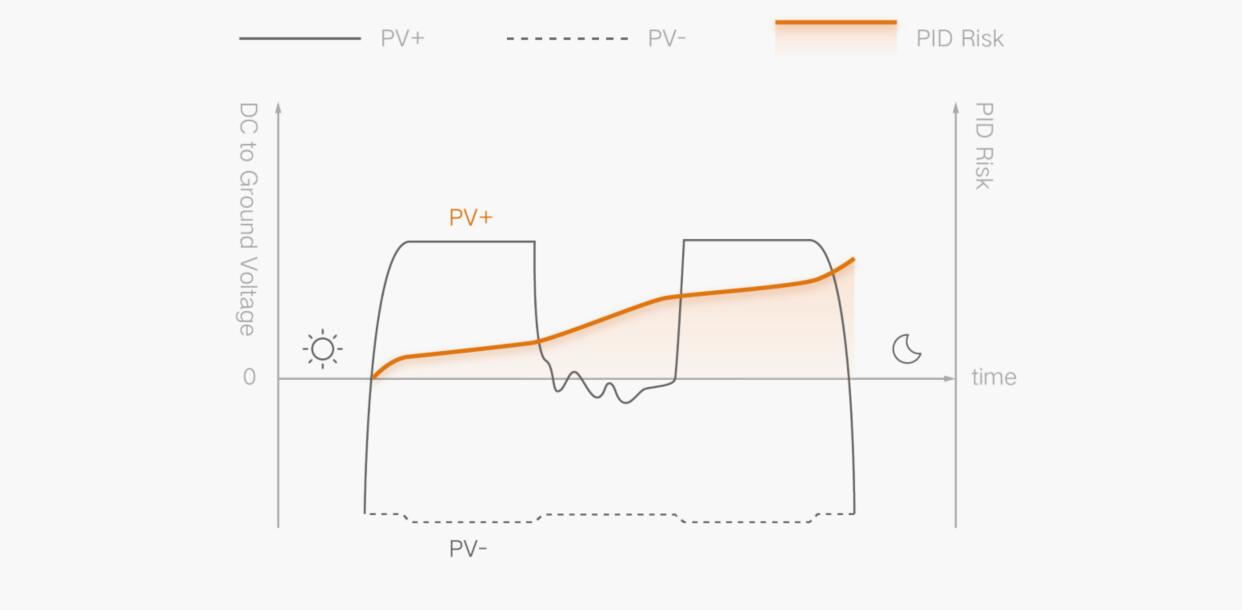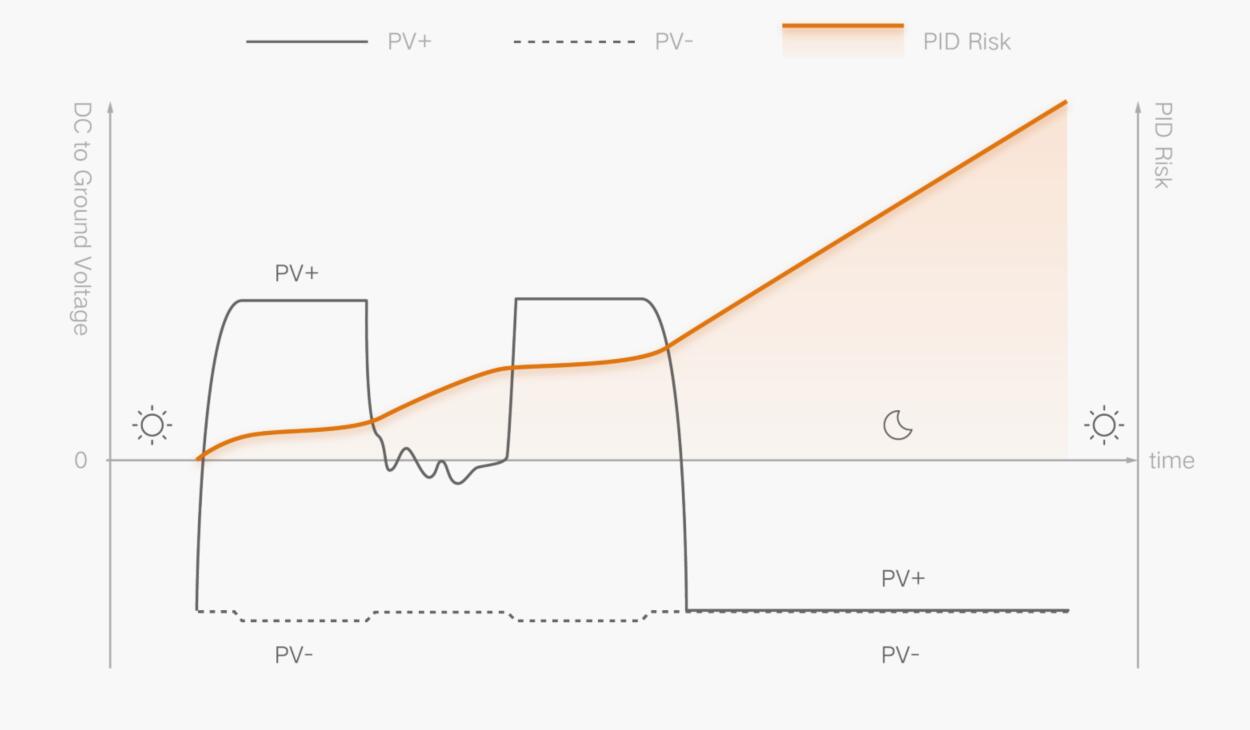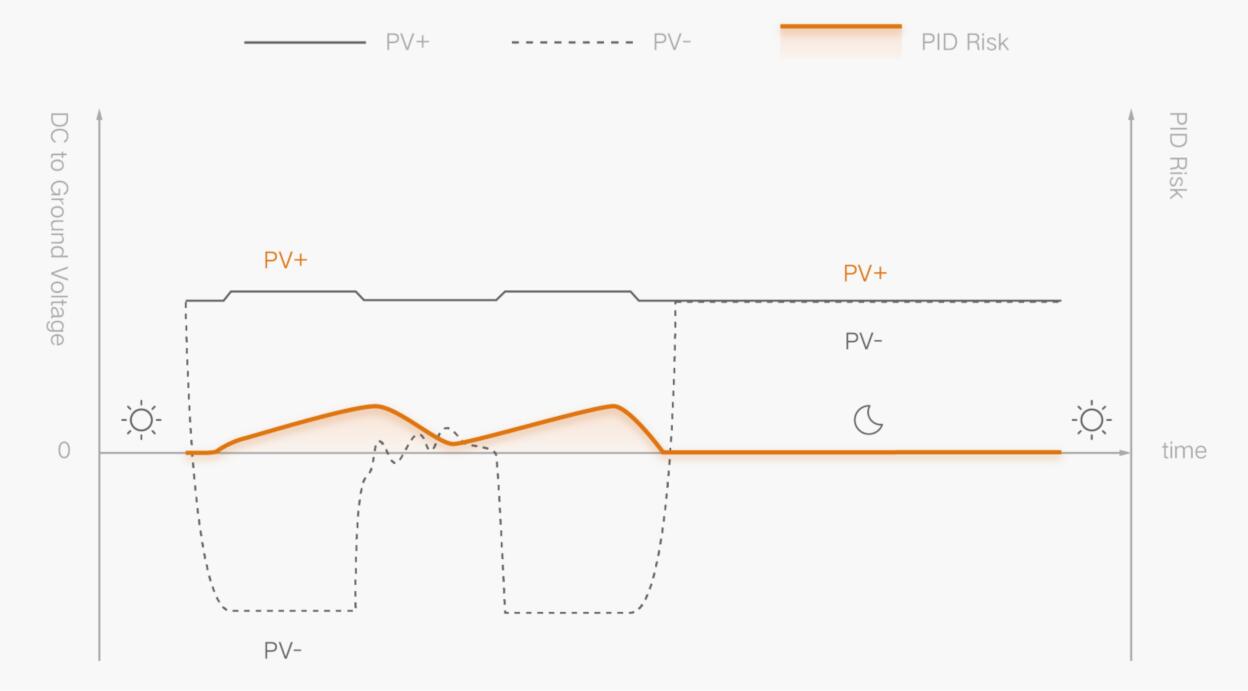Affected by the climate goal of “carbon neutrality”, the energy consumption structure is growing increasingly clean and low carbon, giving rise to the rapid development of the PV industry. Due to long exposure to high temperature, high humidity, and too much dust, PID (Potential Induced Degradation) is unavoidable for PV modules. According to relevant research, permanent PID leads to a power generation loss of up to 30%.
For residential scenarios, the industry usually adopts integrated/external PID recovery modules to lift the PV- to ground voltage for module recovery when the PV system is off-grid at night. This solution relieves the PID effects to some extent, but it can neither effectively suppress PID during daytime when the inverter is connected to the grid, nor be applied to the PV plus storage system which runs throughout the entire day.
Based on the aforementioned struggles Sungrow and TÜV Rheinland co-issued PID Zero -- Anti-PID Solution for Residential PV Systems. Equipped with patented mirror boost typology and an intelligent control algorithm, the innovative PID Zero solution provides 24-hour Anti-PID protection, enabling PID suppression during the day and PID recovery at night with better effects, significantly reducing power generation losses due to module performance degradation.

Fig-1: Patented Mirror Boost Topology
1. Effective PID Suppression During the Day for Module Damage Reduction
Given the small scale of the residential PV system, the traditional inverter needs Boost circuits to extend efficient generation time during the day, which makes the PV- to ground voltage come closer to the negative electrode, increasing the risk of PID.

Fig-2: PID Risk of PV System
Unlike other technologies, the Sungrow PID Zero solution adopts a patented mirror boost topology to ensure the equal potential of PV+ and BUS+. As a result, the PV- to ground voltage comes closer to the positive electrode during boosted operation of the inverter, and PID is therefore effectively suppressed.

Fig-3: PV- to Ground Voltage Comparison
2. Intelligent Repairing at Night for Module Performance Recovery
The PV plus storage system runs 24 hours a day. Moreover, at night, the PV- array to ground voltage is always limited at the lowest voltage point of the system. Compared with the PV system, the PID risk greatly increases.

Fig-4: PID Risk of DC -Coupled PV plus Storage System
Since the neutral point of TN grid is grounded, a huge circular current will occur between the AC and DC grounding points if traditional recovery schemes are adopted, disabling the reliable operation of the system.

Fig-5: Circular Current Schematic
The Sungrow PID Zero solution prevents circular currents between grounding points by reforming the DC side typology structure while no extra recovery module is needed. Controlled by the intelligent algorithm, the system automatically calculates the energy needed for recovery and boosts the voltage for PID recovery. Incomplete recovery caused by insufficient boosted voltage and system losses due to overly boosted voltage are both avoided.

Fig-6: PID Risk of Inverters Equipped with PID Zero
Last year, TÜV Rheinland performed thorough on-site verification and technical review on PID Zero, and the result shows that PV and hybrid inverters equipped with the PID-Zero solution can suppress PID during the day and repair module damages at night, ensuring long life and efficient operation of the modules. Currently, the PID Zero solution has been applied on a scale in residential scenarios. Equipped with PID Zero technology, the SG2.0-10RS PV inverter and SH3.0-6.0RS PV hybrid inverter have been delivered to a multitude of countries and regions including Europe, the Asian Pacific, and Latin America.
Learn more about Sungrow PID Zero solution, please check here.